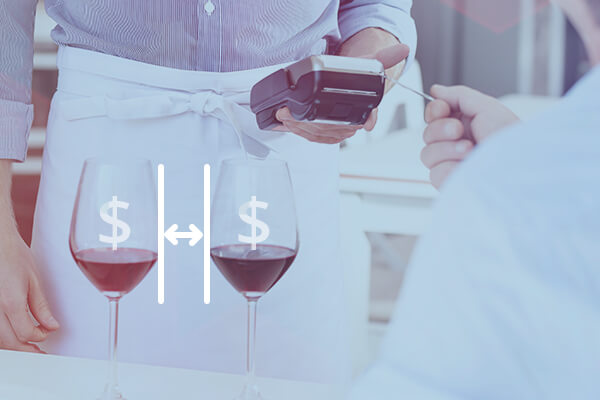5 Ways to Cover the Common 30% Gap in Wine Margin Management
You’re not working with the whole picture.
By basing chargeback invoice reconciliation from third-party depletion numbers, not the actual agreement or data, you’re only getting about 70% of the pricing information and accuracy you need—and that 30% gap is a whole lot of money left on the table.
To break it down further, let’s look at a common example:
Acme Winery sells 100 cases to Anvil Wine & Spirits Distributor in Texas. Anvil then sells those cases to 30 restaurants and 20 stores.
Those 30 restaurants and 20 stores received discounted pricing from Anvil. Some of those discounts were supported by Acme, managed through price grids, but some of them weren’t.
As best as possible and where available, Anvil reports those sales volumes and price points to the 3rd party depletion tracking software used by Acme Winery, Star. Star collects and aggregates the data for all of the distributors that Acme winery works with.
At the end of the month, Anvil Wine & Spirits consolidates all the Acme Winery supported price points and sends them a billback invoice.
Star software is only able to show Acme the transaction and price the retailer paid, so Acme then has to manually reconcile what their price grid says against what their Star data shows for those transactions and manually enter the billback into their accounting or ERP system.
Since Acme is depending solely on depletion data for pricing information (when it happens to be available), they are not able to reconcile those billbacks without excruciating manual processes which will have – at a minimum – a 30% gap in data supplied by all inputs and the manual errors.
It’s easy to look at this as a hypothetical scenario, but chances are, if you’ve made it this far it’s because you can see your own winery in this scenario. That is because it’s extremely common. So, how do you start to cover the 30% gap?
- Ensure 100% coverage – Centralize the management of your grids on all of your products, distributors, markets, territories—track all of your promotions, incentives, and expenditures, not just DAs and not just when it happens to be available.
- Establish program guardrails – Set rules on distributor contracts and transactions by establishing promotion start and end dates (by month, year, or quarter), budget caps, region activation, etc. Quit paying out DAs on old promotions or promotions that no longer align with your strategy.
- Automate pricing approvals – Stop the sales and finance back-and-forth and the inefficient, manual pricing reconciliations. Receive DAs electronically and confirm that deals invoiced qualify and the rebates are accurate in real-time from any device. Integrating your accounting system and/or ERP into your pricing and promotion tool is paramount to automating. This allows you to create workflows that ensure finance and sales seamlessly work through invoices together and tie spend to the depletion period.
- Check the effectiveness of your programs – Centralize your data and accurately track every dollar spent. How much does your BTG program *actually* cost? How much is spent on incentives, samples, and free goods? What regions are most profitable? What promotions are working (or not working) by area? What promotions are the most profitable? Having the answers to these questions (and more) in real-time puts the power of profitability in your hands.
- Make adjustments – Drive better results and continually improve performance. Pull reports, visualize and study sales, spend, and profitability, then adjust your strategies and programs accordingly. Use the data to determine your pricing and create profitable promotion models at any level.
Take a look at what full-cycle margin management looks like here.
If your current pricing and promotions management can’t do that, you’re missing barrel loads of margin upside opportunity, and it’s time to consider a new solution. Covering the 30% margin management gap will recover thousands in lost profits and ensure that you never pay out unwarranted funds from expired, incorrect, or erroneous chargebacks. It’s essential to remove all the costly, error-prone, and time-consuming management of negotiated distributor pricing and account for 100% of every dollar.
Tradeparency tracks every dollar across your markets through a full-cycle, closed-loop price management system. It allows you to realize complete transparency for all your trade promotions across all your products, markets, and territories by delivering the ability to plan, price, execute, settle, and analyze your trade programs in a single, integrated, and intuitive platform built specifically for the three-tier wine business.
But Tradeparency isn’t just a software solution; it’s a partnership in building pricing victories. We don’t just dump tools on your desk; we are a hands-on collective of experienced and enthusiastic wine data artisans who help businesses in the three-tier industry centralize, automate, and optimize their pricing and promotions programs.

